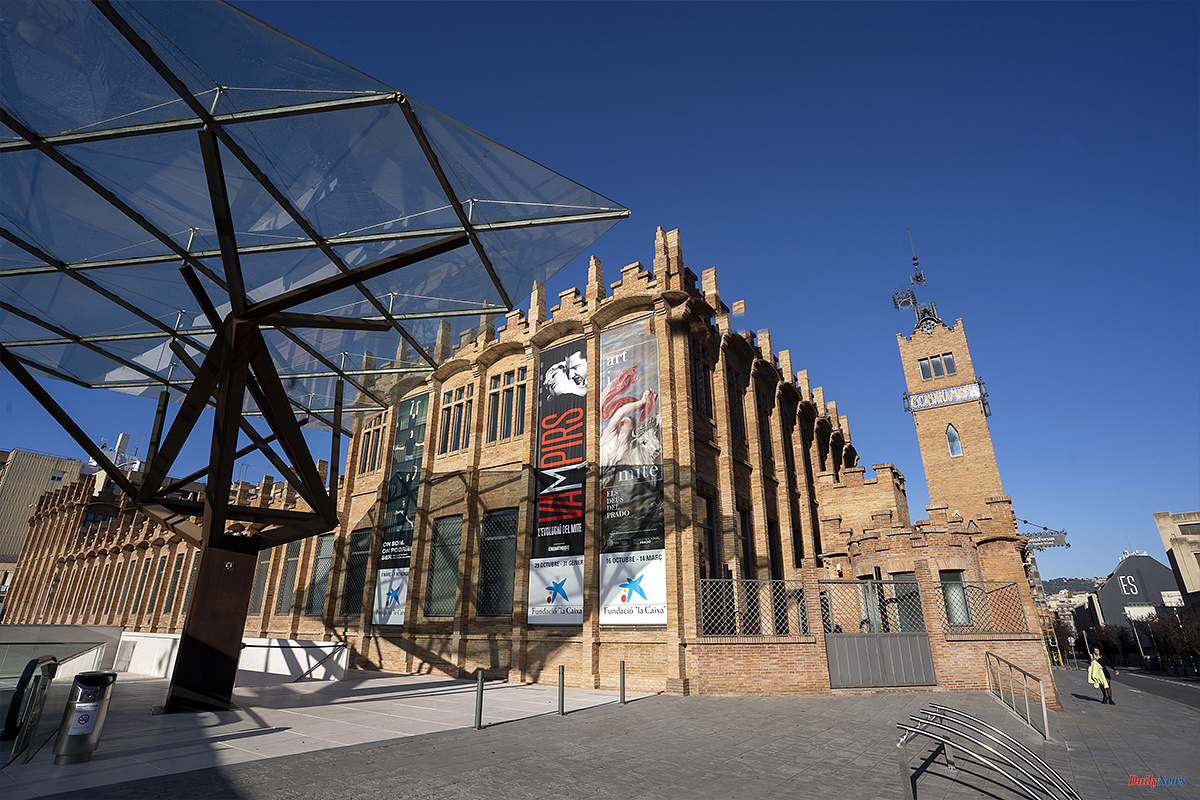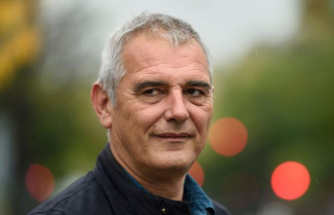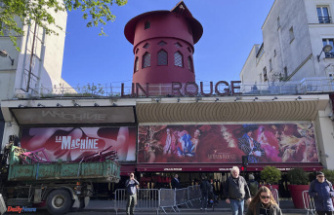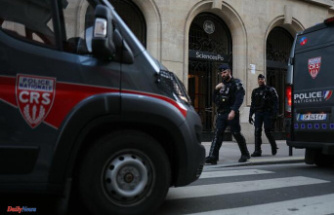Egyptian mummies, yakuza tattoos, Woody and Buzz Lightyear, the fashion of Jean Paul Gaultier or the surrealism of Magritte. All under the roof of a modernist factory, an old power station or a futuristic glass vault. Anything can happen in a CaixaForum, the cultural center model that the "la Caixa" Foundation has been promoting in Spain for 21 years. To its nine centers, each with its own DNA, a new one will be added in 2026 in Malaga, in Manuel Azaña square, one of the most visible entrances to the city, consolidating a museum network that stands out on the European circuit with strategic alliances. with the British Museum, the Prado or the Pompidou.
«From the beginning, the objective was to bring culture and scientific dissemination closer to the citizen. Although the usual thing would have been to opt for a cultural center that would centralize all the activity of the Foundation, we created our own model, unique in Europe, to reach the maximum number of people possible", explains Elisa Durán, deputy general director of the Foundation "la Caixa". On the table she displays a large puzzle-calendar with the exhibitions that will tour the different centers until 2026: the pieces of multiple colors - each exhibition has its own - give an idea of the complexity of the network.
The nine CaixaForums stand out as icons of each city, beginning with the flagships of Barcelona and Madrid, with a public that usually repeats its visit up to three times a year, a figure that any museum would envy. "That the public repeat is very important, since the habit of cultural consumption is consolidated," Durán highlights.
In the lobby, a group of children play in front of a fun colored mural: 18 meters long that Sol LeWitt, a champion of minimal art, designed for CaixaForum. Above the schoolchildren there is a spiral neon that looks like a very new millennium design, except that it was projected by Lucio Fontana for the Milan Triennale in 1951 and is one of the emblematic works of the "la Caixa" Collection of Contemporary Art. which exceeds a thousand pieces.
Thanks largely to the CaixaForum effect, Montjuïc stands out as a new museum center. It is difficult to visualize the Casaramona textile factory at the beginning of the 20th century, when Plaza de España was a large empty esplanade at the foot of the mountain: in these fields, the architect Josep Puig i Cadafalch built an exposed brick complex dotted with exquisite wrought iron. "Those who see it for the first time do not believe that this building with its artistic and original architecture is a factory," wrote the newspapers of the time. However, the factory went bankrupt and after a hazardous journey, in which it was used as police stables, the building was disfigured.
In the 1992 Olympic Games, the "la Caixa" Foundation began to study a complex renovation to turn it into a cultural center that would open 20 years later, after investing 30 million euros. To its restored modernist splendor, the architect Arata Isozaki added a sophisticated entrance courtyard and the metal and glass tree-sculptures that welcome the center. "I am aware that in front of the CaixaForum there is one of the most important buildings in the history of architecture," he said then, referring to the Mies van der Rohe Pavilion, a jewel of the 20th century, right in front of the CaixaForum and designed with five marbles. different. In a clear parallelism and homage, Isozaki replaced the travertine marble that Mies had used with that of Cabra, originally from Córdoba, but with the same color and more resistance. "He could turn the shape of the Mies pavilion and bury it, so that to enter the CaixaForum the visitor would have to enter a kind of underground garden," explained Isozaki, Pritzker Prize winner in 2019.
In its 21 years, CaixaForum has established itself as one of the most attractive cultural centers in Barcelona (518,809 visitors last year), close to the Museu Nacional d'Art de Catalunya (550,000) and surpassing the central MACBA (249,565). The CaixaForum network of Catalonia is completed with centers in Lleida (in the old Cine Vinyes), Tarragona (in a neoclassical venue) and Girona (in the medieval mansion La Fontana d'Or).
How to create a new icon in the Art Triangle? How to make a gap between the Prado, the Thyssen and the Reina? In 2008, CaixaForum achieved this with the first vertical garden in Spain and the highest in Europe at 24 meters: 15,000 plants of 250 different species occupy an area of 460 square meters. Designed by the artist and landscape designer Patrick Blanc (who had already signed the one for the Musée Quay Branly in Paris), the garden is integrated with the intervention of the Swiss Herzog
«CaixaForum is conceived as an urban magnet that attracts not only art lovers, but also Madrid residents and people from abroad. The attraction will not only be the cultural program but also the building itself”, stressed the architects, managers of museums such as Pérez Art in Miami or the expansion of the Tate in London. In its 15 years, the one in Madrid has become the most visited CaixaForum, close to 700,000 visitors in 2022 (for comparison: the Thyssen received one million visits in the year of an outstanding program that celebrated its three decades).
In 1903, Mallorca inaugurated the Gran Hotel de Palma in style, the most luxurious in Spain until the Ritz opened in Madrid in 1910. Designed by Lluís Domènech i Montaner, every artist and intellectual who passed through the island ended up attending its gatherings and salons. But the Second World War paralyzed tourist activity in the Balearic Islands and it closed its doors in 1941, passing into the hands of the State, which would make it the headquarters of the National Institute of Welfare after a reform that was described as "scandalous architectural homicide".
The building recovered its Belle Époque shine in the 1990s, when "la Caixa" acquired it and completely renovated it. One of the peculiarities of CaixaForum Palma is that, in addition to the temporary exhibitions, there are always on display works by the brilliant Hermen Anglada Camarasa, one of the most outstanding modernist painters who made Mallorca his home and refuge and of whom the "la Caixa" Foundation "has an important pictorial background.
On the grounds of the old El Portillo railway station, which had divided Zaragoza for years, the architect Carme Pinós had the challenge of conceiving “a building that makes a city and that when we inhabit it we feel part of it”. In 2014 she inaugurated a new CaixaForum, an urban symbol that stands out for its modernity, the forcefulness of its design and elegant night lighting. Pinós designed an exterior that combines windows and aluminum plates decorated with organic motifs, which are illuminated with blue LEDs. "Every time we arrive in a new city, CaixaForum acts as a motor and dynamic agent that promotes and reactivates the cultural offer," says Durán. Pinós achieved a building that made a city and, in 2021, she was the second woman distinguished with the National Architecture Award.
At the foot of the 180-meter Sevilla Tower, the skyscraper that changed the skyline of the Andalusian capital, Guillermo Vázquez Consuegra turned a nondescript parking lot into a bold and radical building that won him various architecture awards, from Canada to Mexico. The Sevillian architect defines his CaixaForum this way: «The project proposes the superposition of two worlds: an interior, excavated world, which is resolved with a Cartesian, orthogonal architecture, an architecture forever, of permanence, and an exterior world represented by the marquee, which responds to contingencies, limitations, links and constraints».
In five years, CaixaForum has established itself in Seville: in 2022 it attracted 194,790 visitors, surpassed by the Museum of Fine Arts (243,546), but ahead of the Andalusian Center for Contemporary Art (163,356). "We do not compete with the museums, we want to add, stimulate the offer and fill in the gaps that may exist," says Durán.
Inaugurated last summer, in six months the most futuristic of the CaixaForums has registered a whopping 670,655 visitors. "It always happens with new openings, then the figures stabilize," Durán clarifies. In the Ciutat de les Arts designed by Santiago Calatrava, CaixaForum has occupied the Ágora building, which has fallen into disuse in recent years. More than an adaptation or a new center, the architect Enric Ruiz-Geli has invented a landscape, an ecosystem within Ágora that mixes nature and digital crafts: a cave-garden, ceramics by Toni Cumella that refers to Gaudí's trencadís, the spectacular Cloud space created in 3D printing... «CaixaForum is a landscape. We could not be a small building within a large one. On the contrary, we take from him the best. The Calatrava building protects us from the rain and the wind”, explains Ruiz-Geli, head of elBulli1846 by Ferran Adrià.
For the first time, the "la Caixa" Foundation has commissioned two permanent works from local artists through a competition. "It is a way to promote the country's artists and give them an international projection," claims Durán. Outside, the Palafit by Anna Talens, a tribute to the popular architecture of the farmers of La Albufera, welcomes visitors. And, inside, the Arc al cel de Inma Femenía, a steam sculpture, reproduces a giant rainbow.
While waiting for Barcelona to launch a vertical forest this spring that promises to be its new attraction, there is a cybernetic CaixaForum that arrived in December: CaixaForum. It is virtual, a cultural service that will revolutionize the concept of streaming with more than 1,100 contents ranging from poetry to theater or science. "It is complementary to the face-to-face offer, but it goes further to go where no physical center could," celebrates Durán. A CaixaForum without borders, for everyone.
According to the criteria of The Trust Project












